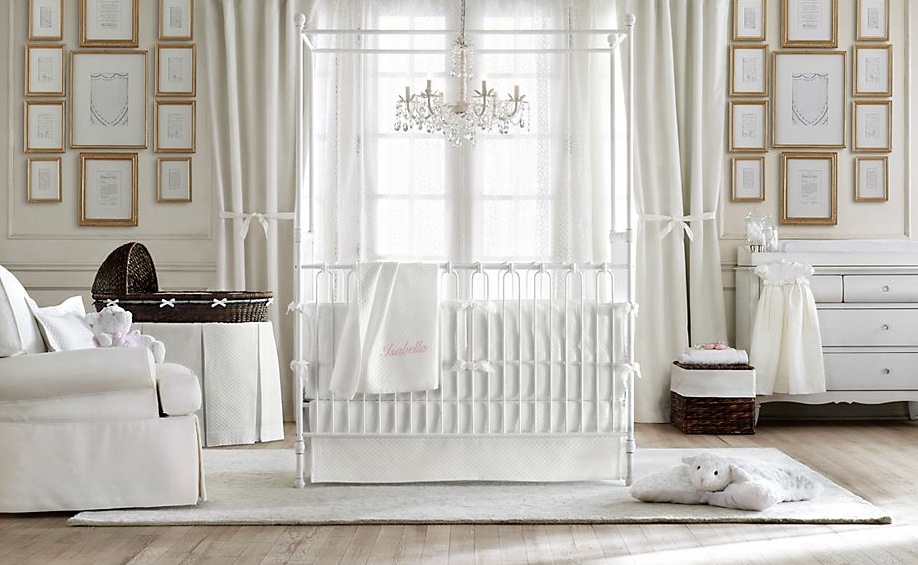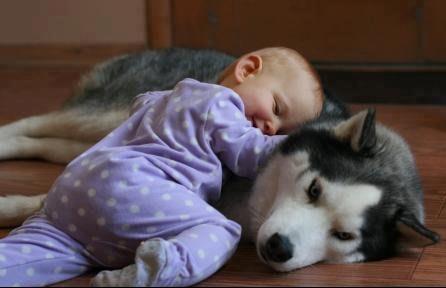We all want to make things as easy for our children as possible, especially during their earliest years. A baby’s development shouldn’t be burdened by any unnecessary hardships as it should be allowed to thrive freely. Babies usually spend their first months sleeping with their parents in their bedroom before moving out to their own room called the baby’s room. For some babies, this transition can be a difficult one as the parents’ bedroom is essentially the first surrounding they get to know, aside from the brief time they spent in the hospital.
Young babies can often come to think of the parents’ bedroom as their home and might not react well to their parents’ wishes to move them to their own room. They might express this dissatisfaction through constant crying and unrest until they are returned to the bedroom in which they spent most of their first months. There is a way for parents to overcome this issue by looking to make the interior of the baby’s room similar to that of their bedroom.
If done right, this will make the transition as seamless as possible for the toddler as it might not even realize that it is in another room. To him or her, it might simply seem as if the baby’s room is just an extension of the bedroom they grew familiar with and learned to love.
This type of decoration can essentially be done in two different ways. The parents can either opt to style the baby’s room in accordance to the decor of the bedroom, or they can go a step further and redesign their own bedroom so that it looks more similar to the room where their baby will be moving.
The first solution is chosen by most parents going for such a design synchronization as it doesn’t involve redecorating a room for a brief amount of time but instead simply means adding a slightly different style to a room that was already being remade. In general, the baby’s room will first be painted in the same color as the parents’ bedroom, including all the walls and the ceiling. Then, pieces of furniture can be added that resemble the bedroom where the child’s first memories are formed. Some parents even like buying new bedroom items for themselves, like lamps or carpets, and using the old ones for the baby’s room in order to further make the baby comfortable.
This is definitely easier on everyone involved as it requires the redesigning of just a single room, even if it means that the baby’s room won’t look in accordance with what the parents wanted. However, those parents that insist on making their baby’s room look a certain way can take steps before the child is born in order to make their bedroom appear as similar to the baby’s room as possible. This will usually mean placing most of the objects that the baby’s room will have into the bedroom for the duration of the toddler’s stay there.
In some cases, it can even involve a new paint job in order to truly make the bedroom resemble the room the child will be moving to. This is most often done when a design of the baby’s room is already in place and parents don’t wish to change it. For some, however, it’s too much effort as it will likely involve redesigning the bedroom twice on top of already redecorating the room that became the baby’s room.
Whichever method you end up going for when looking to make your baby’s transition to its own as soon as possible, it will put the child at ease much more than if you were placing it in a completely new environment. Children get scared easily and don’t always respond best to new surroundings, especially when moving out of the room where they first experienced comfort and their parents’ care. Add to that the fact that you won’t be spending as much time in the baby’s room as you did in your bedroom, and your child can easily end up facing considerable separation anxiety making it unwilling to spend time in its own room and desperate to return to your bedroom. This home decor trick ensures that your baby doesn’t suffer any shocks while making the biggest voyage into the unknown since its birth.
September 2015
Those with pets often find themselves with an important consideration on their hands once a baby is on its way and the baby’s room needs to be designed. Many if not most parents don’t want their pets anywhere near the baby while it is still in its most vulnerable state. A select few, however, feel that certain pets near the baby can have a positive effect on it, thus looking to introduce them to the baby as soon as possible and hope for the best.
 If you have a pet and are considering whether or not you should ever let it in the baby’s room, there are quite a few things you will want to go over before making your choice. For starters, the exact type of the pet will tend to be the most important thing to consider as different pets will interact with babies in different ways.
If you have a pet and are considering whether or not you should ever let it in the baby’s room, there are quite a few things you will want to go over before making your choice. For starters, the exact type of the pet will tend to be the most important thing to consider as different pets will interact with babies in different ways.
Dogs tend to be the most common household pets, but not all canines make a good match for toddlers. Some canines are aggressive and might even threaten to hurt the baby if they are left alone with it for too long. Others are docile but very large and might create a risk of flipping the crib over in an attempt to play with the baby.
Cats are also very common types of pets. While letting one roam around the baby’s room might generally seem like a good idea, there are some dangers associated with it as well. Depending on the type of cat and its general behavior, it might end up scratching or otherwise harming the child, especially if the toddler attempts to play with it and the cat misinterprets this.
No matter if you have a cat or dog, any and all attempts to introduce it to the child while it is youngest should be done under your strict control in order to minimize any potential risks. You should always position the animal in a way that lets you have control over its actions and allows you to quickly remove it from the baby’s vicinity.
Another important thing to consider is the possibility of pets urinating or defecating somewhere in the baby’s room. This would greatly distress the baby and potentially pose significant health risks, adding more reasons why you should never let a pet inside the baby’s room without you being present.  Those with birds, in particular, can find them flying over the baby’s crib and relieving themselves inside it, potentially threatening your baby significantly as babies are very prone to illness due to their undeveloped immune systems.
Those with birds, in particular, can find them flying over the baby’s crib and relieving themselves inside it, potentially threatening your baby significantly as babies are very prone to illness due to their undeveloped immune systems.
Before you make the decision to let a pet inside your baby’s room, you should also make sure that your baby doesn’t have any allergies as many people are allergic to cats and dogs. If your toddler suffers from such an ailment and you own one of these pets, you might need to redecorate your entire home in order to have better control over where the pet is allowed to go.
With these in mind, a pet can indeed offer positive stimulation to a toddler and can significantly brighten its earliest months and years. Many pets are friendly and will instantly recognize the baby as a part of the family, looking to socialize and play with it as long as they are allowed.
While many babies react to pets positively, some can actually be frightened by them, making them cry and placing them under duress. If this is the case with your baby, or you simply wish to avoid having the pet anywhere near the child, you should look to install an appropriate door as part of your baby’s room decor.
This door should be designed in a way that will keep any pets out at all times, especially stronger ones that are sometimes able to open unlocked doors on their own. However, don’t let this increase the difficulty of you reaching your baby in time should it require your immediate attention, as the baby’s room should always be quickly and easily accessible to both parents.
Also, be mindful of keeping the windows in the baby’s room open. While a breath of fresh air and sunlight can be greatly beneficial to a toddler, open windows can not only allow pets and stray animals to climb into the baby’s room but might also make way for insects that could potentially place your child in danger.
